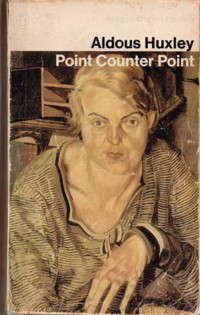
There is a lot to see in Toronto.

Canada has quite a bit in common with Australia. Indeed, across Canada, except in Quebec, when sitting in bars and caffes and overhearing the accents of the staff, you might be tempted to think that you are in Australia. Many of them seem to be staffed exclusively by back-packing Australians.
We are, of course, both constitutional monarchies, and share the same, remote, royal family. So, I was not surprised to encounter a large equestrian statue of Edward VII in Queens Park, as Sydney has a similar one in Macquarie Street - hat on head - sun aware.
The mystery here is that this one has an elaborate convex tablet in front proclaiming: that it was: placed here, in Delhi, by King George V Emperor of India (for the Coronation Dubar 15 December 1911).
This required an explanation.
It turns out, that is once stood before the Red Fort in Delhi and has been moved half way around the world.
It's like the statue of Queen Victoria, between the Town Hall in Sydney and her eponymous Building, that came from Ireland when she became anathema there. Like the ungrateful Irish, the Indians didn't want a remembrance of dead Edward anymore; nor his son's tablet proclaiming himself Emperor.
Thus, Toronto also has this in common with many Australian cities, in that in a park you may well encounter, in effigy, some long dead King, and recently, yet another dead Queen.
Interestingly, it transpires that Emperor George V was euthanised, some say murdered, probably without his consent, after his wife, Queen Mary, and his son, soon to be Edward VIII, explicitly told the king’s physician, Lord Dawson, that they did not want the King life needlessly prolonged if his condition was fatal. Dawson promptly filled his syringe and George was gone before the evening papers went to press (read more...). George's last words were said to be: “God damn you!” This was discovered in 1986 when Dawson's diary, giving his account of the circumstances, was made public.
I was immediately reminded of Liza (Eliza) in Pygmalion (My Fair Lady) telling Mrs Eynsford Hill about the death of her aunt, who had promised her a hat:
Liza: My aunt died of influenza: so they said... But it's my belief they done the old woman in.
Mrs Eynsford Hill: You surely don't believe that your aunt was killed?
Liza: Do I not! Them she lived with would have killed her for a hat-pin, let alone a hat.
Like other great cities, in addition to parks, Toronto has numerous museums and art galleries.
There's far too much to see in the Art Gallery of Ontario for me to show here, not that I photographed more than one in twenty, so I've given you just one picture here. It's worth seeing for the building alone.
If you click on Luisa, you'll see some other photos I took in the gallery.
 The Marchesa Casati (Luisa) by Augustus John 1919 - oil on canvas
The Marchesa Casati (Luisa) by Augustus John 1919 - oil on canvas
Again, the Royal Ontario Museum, in Queens Park, Toronto, is vast with a very eclectic catalogue, ranging from dinosaur and megafauna skeletons to fully furnished rooms and objet d’art. So, again, if you are interested in a little sample, click on the picture below to see some of the photos I took.
Standouts, for me, are the many ways, some incredibly bizarre, in which humans attempt to pass into an imagined an obviously mythical 'afterlife' when they die. Among these are the Museum's big Egyptian, ethnic and western/eastern collections, dedicated, to one degree or another, to the same futility. But the most unusual is to go to the next world in a Mercedes Benz coffin.
| "Oh Lord, won't you buy me A Mercedes Benz? My friends all drive Porsches I must make amends..." If dead people, like Janis, have clothes in the next world, maybe they also have other manufactured goods, like German cars and TV sets? |
After a very pleasant stay in Toronto it was time to get a car, this time from Billy Bishop Toronto City Airport on Toronto Island. There's a pedestrian tunnel to get there but no road tunnel. So, I had been wondering how the rental cars got in and out. This was disappointingly conventional, it just required taking a car-ferry to the mainland. Yet, it was a small adventure in itself.
Now we had a real car, not a wooden Merc, it was time to get on with our travels:
| "Let's go again to Niagara, this time we'll look at the falls... " A travel 'bucket list' - a couple more to check off |


